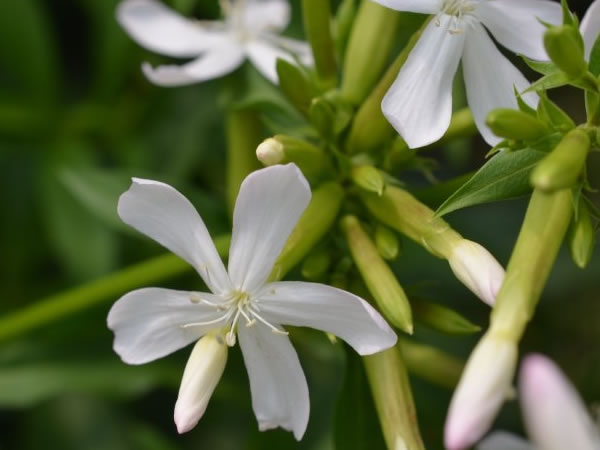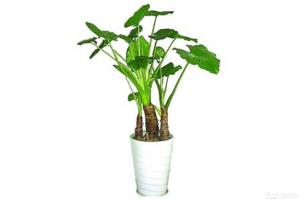Culture methods of soap grass morphological characteristics of soap grass
Soapy grass, also known as stone flower, plant type, beautiful flower shape, rich fragrance, high ornamental value, suitable for flower bed, flower border planting. How to raise soap grass? What are the morphological characteristics? Let's learn about it next.

First, the culture method of soap grass
Soap grass is strong in nature, resistant to rough management, and lax in soil requirements. It can be planted in general loam and slightly alkaline-resistant soil (pH = 6.5-7.5).
1. Soap grass likes light, warm and humid climate, and avoids waterlogging. Neutral plots with good drainage and low groundwater level should be selected when planting, preferably sandy soil and sloping areas.
2. Soap grass has strong drought resistance and generally does not need to be watered often. if Rain Water is less and the temperature is high, the good ornamental effect can be guaranteed by watering thoroughly every 20 days or so. Once a year, turn green water in spring and pour anti-freezing water at the beginning of winter.
3. Soap grass is barren-tolerant, the amount of fertilizer needed is not large, and the requirement of fertilizer is not strict, about 7500kg per hectare. During the vegetative growth period, nitrogen fertilizer is the main fertilizer, a small amount of phosphate fertilizer is properly applied, and inorganic fertilizers such as nitrogen fertilizer, calcium superphosphate and potassium dihydrogen phosphate are sprayed twice before flowering, which can achieve the ornamental effect of strong leaves and beautiful flowers.
4. Soap grass generally does not need pruning, but after pruning in the growing season, the growth rate is very fast, and a landscape can be formed in about half a month.
5. Soap grass has strong adaptability, high survival rate of transplantation, easy cultivation, simple maintenance, strong group function and fast landscape formation. The soapy grass has developed root system, thick green branches and leaves, dense florets, strong resistance, resistant to weed growth, and can grow for many years after planting.
6. in the high temperature season from July to August, soap grass is prone to leaf spot disease, and most of the pests are grubs and ground tigers, which often damage roots and rhizomes, resulting in plant death, lack of seedlings and broken ridges.

2. Morphological characteristics of soap grass.
Soap grass is a perennial herb, 30-70 cm tall. The main root is fleshy and fleshy; the rhizome is thin and much branched. Stem erect, unbranched or upper part branched, often glabrous. Leaf blade elliptic or elliptic-lanceolate, 5-10 cm long and 2-4 cm wide, base narrowing into a short stalk, slightly connate, semi-clasping, apex acute, margin scabrous, glabrous on both surfaces, with 3 or 5 basal veins. Cymes with 3-7 flowers; bracts lanceolate, long acuminate, margin and midvein sparsely hispidulous; pedicels 3-8 mm long, sparsely shortly hairy; calyx tubular, 18-20 mm long, 2.5-3.5 mm in diam., green, sometimes dark purple, initially hairy, longitudinal veins 20, inconspicuous, calyx teeth broadly ovate, convex; pistil and stamens ca. 1 mm long. Petals white or reddish, claws narrow, glabrous, limb cuneate-Obovate, 10-15 mm long, apical retuse; corona linear; stamens and style exserted. Capsule oblong-ovate, ca. 15 mm; seeds round-reniform, 1.8-2 mm long, dark brown, with tubercles.

The above is the introduction of the cultivation methods and morphological characteristics of soap grass. I hope it will be helpful for everyone to cultivate soap grass. I also want to know more about soap grass and continue to pay attention to us.
Recommended reading:
① how to plant Datura mandala
② Carnation Culture method Pot cultivation experience of Carnation Flower
Cultivation methods of ③ drunken Fish Grass experience in planting and Management of drunken Fish Grass
What is ④ rushes? planting methods of rushes
Hydroponic methods and Propagation techniques of ⑤ Reticulate Grass
- Prev

There is no poison in the cultivation of Dripping Guanyin.
There is no poison in the cultivation of Dripping Guanyin.
- Next

Propagation methods of safflower gentian control of diseases and insect pests of safflower gentian
Propagation methods of safflower gentian control of diseases and insect pests of safflower gentian
Related
- Wuhan Hospital Iron Tree Blooming Result Was Instantly Frightened by the Gardener Master
- Which variety of camellia is the most fragrant and best? Which one do you like best?
- What is the small blue coat, the breeding methods and matters needing attention of the succulent plant
- Dormancy time and maintenance management of succulent plants during dormancy
- Minas succulent how to raise, Minas succulent plant pictures
- What are the varieties of winter succulent plants
- How to raise succulent plants in twelve rolls? let's take a look at some experience of breeding twelve rolls.
- Attention should be paid to water control for succulent plants during dormant period (winter and summer)
- Watering experience of twelve rolls of succulent plants
- Techniques for fertilizing succulent plants. An article will let you know how to fertilize succulent plants.

